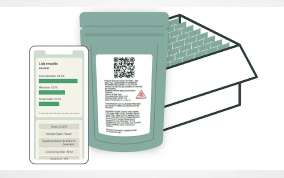Mondaq
Back in our AUSA days we prosecuted many drug cases. That was a significant part of our job. The defendants were uniformly unsavory and many were violent. That being said, the mandatory minimum
Back in our AUSA days we prosecuted many drug cases. That was a significant part of our job. The defendants were uniformly unsavory and many were violent. That being said, the mandatory minimum sentences were often crazily high. Sell 50.1 grams of crack and eat ten years. If you had a prior drug conviction (hardly uncommon), you’re looking at twenty years. No wonder so many of these cases went to trial. A guilty plea could not shave much off the sentence.
Because we were in a big city office and drug deals were superabundant, we applied internal guidelines to manage the workload. The quantity of drugs sold had to exceed a certain amount before we would consider taking a case. Small quantity cases would go stateside. (After California passed a three strikes law, a comical side effect was that federal prosecutors had a weird piece of leverage: plead guilty or we’ll decline the case.) Even with the guidelines, we had plenty of work.
Posturing politicians love to say they are tough on crime. At least the crack-powder disparate treatment eventually went away. As we said, prosecuting these cases was part of our job. But it was far from self-evident why a drug sale on a street corner in Los Angeles needed to be a federal case. How can members of Congress who laud local control simultaneously insist that local drug crimes be prosecuted federally? Harsh treatment of marijuana (which is, ridiculously, a Schedule 1 drug) street sales seemed especially inappropriate, since casual marijuana use was far from anomalous. And that was back in the 1990s. Federal prosecution of marijuana cases is really passing strange now, when most American downtowns smell like Amsterdam.
All of which brings us to Cannabis Impact Prevention Coalition, LLC v. Hochul, 2024 N.Y. Misc. LEXIS 14151 (Sept. 30, 2024),in which opponentsof New York State legalization of marijuana invoked the federal Controlled Substances Act (CSA – yeah, that abbreviation is more typically applied to something else, which makes the federalism implications even weirder) and the Food Drug and Cosmetics Act (FDCA) in an attempt to overturn state law. They lost in this to-be-published decision.
The New York law “allows for adults 21 years of age or older to use and possess marijuana in moderate amounts.” Pursuant to that law, New York promulgated regulations that permit medical use of cannabis and affix various warnings to marijuana packaging/advertising, such as “cannabis can be addictive,” “cannabis can impair concentration and coordination,” and “there may be health risks associated with consumption of this product.” Of course, as folks like to say in the comment sections, YMMV.
The plaintiffs brought an action for a declaratory judgment and an injunction seeking to “put an end to Respondents’ unconstitutional ultra vires venture in violation of federal law and to compel [respondents] to perform their executive duties in accordance with federal law.” Here is how the plaintiffs summarized their theory: “Respondents are attempting to orchestrate a marijuana trafficking operation utilizing taxpayer funds and public employees and resources. Their blatant disregard of every major objective embodied in federal marijuana law directly conflicts with, and otherwise stands as an obstacle to, Congress’s mandate that production, possession, and distribution of Schedule 1 drugs, including marijuana, be prohibited unless approved by federal law.” That sounds less like a sober legal theory and more like a title card to the old Reefer Madnessmovie.
The plaintiffs invoked the Supremacy Clause in arguing that the New York regulations were preempted by federal law.
The respondents moved to dismiss the Governor because she was not a proper party to the action (granted) and moved to dismiss the action based on lack of standing (denied). Then we get to the respondents’ motion to dismiss the action for failure to state a cause of action.
The issue boiled down to conflict preemption – a subject that has shown up in this blog every once in a while. The CSA’s classification of marijuana as a Schedule 1 drug represents a finding that marijuana has “no currently accepted medical use at all” and has a “high potential for abuse.” That classification renders the manufacture, distribution, or possession of marijuana as a criminal offense. (It might be high time to drop pot from schedule 1, but … politics. Here is a link to the DOJ’s pending proposal to down-classify marijuana.)
At the same time, the CSA expressly is not preemptive of state law. It acknowledges the absence of Congressional intent “to occupy the field in which that provision operates, including criminal penalties, to the exclusion of any State law on the same subject matter which would otherwise be within the authority of the State, unless there is a positive conflict between that provision of this sub chapter and that State law so that the two cannot consistently stand together.”
Is there a conflict? The New York State court concluded that there was no such conflict. In particular, while the federal CSA has been held to regulate “medical practice insofar as it bars doctors from using their prescription-writing powers as a means to engage in illicit drug dealing and trafficking as conventionally understood,” it does not purport to regulate the practice of medicine generally. States have “great latitude” under their police powers to legislate protection of the health and safety of their citizens. Thus, the “structure and function of the CSA presume and rely upon a functioning medical profession regulated under the States’ police powers.” So far, so good – we guess. But so what?
Nothing in the CSA requires a state to criminalize marijuana. Nor could Congress force states to enforce the CSA. Moreover, neither the CSA nor the FDCA allow private rights of action. Most importantly for prescription medical product liability litigation is the holding that a plaintiff “may not circumvent a lack of a private right of action in one statute [the FDCA] by incorporating allegations of its violations into claims pleaded under another statute that does allow for a private right of action.” Thus, the decision refuses to do to New York law what the California courts have done to California law — allow FDCA-based claims masquerading as ‘state-law’ claims. Since all of the plaintiffs’ asserted state statutory claims argued only violations of the CSA or FDCA, they were all dismissed.
Would different/better pleadings survive a motion to dismiss? Stay tuned.
This article is presented for informational purposes only and is not intended to constitute legal advice.




















